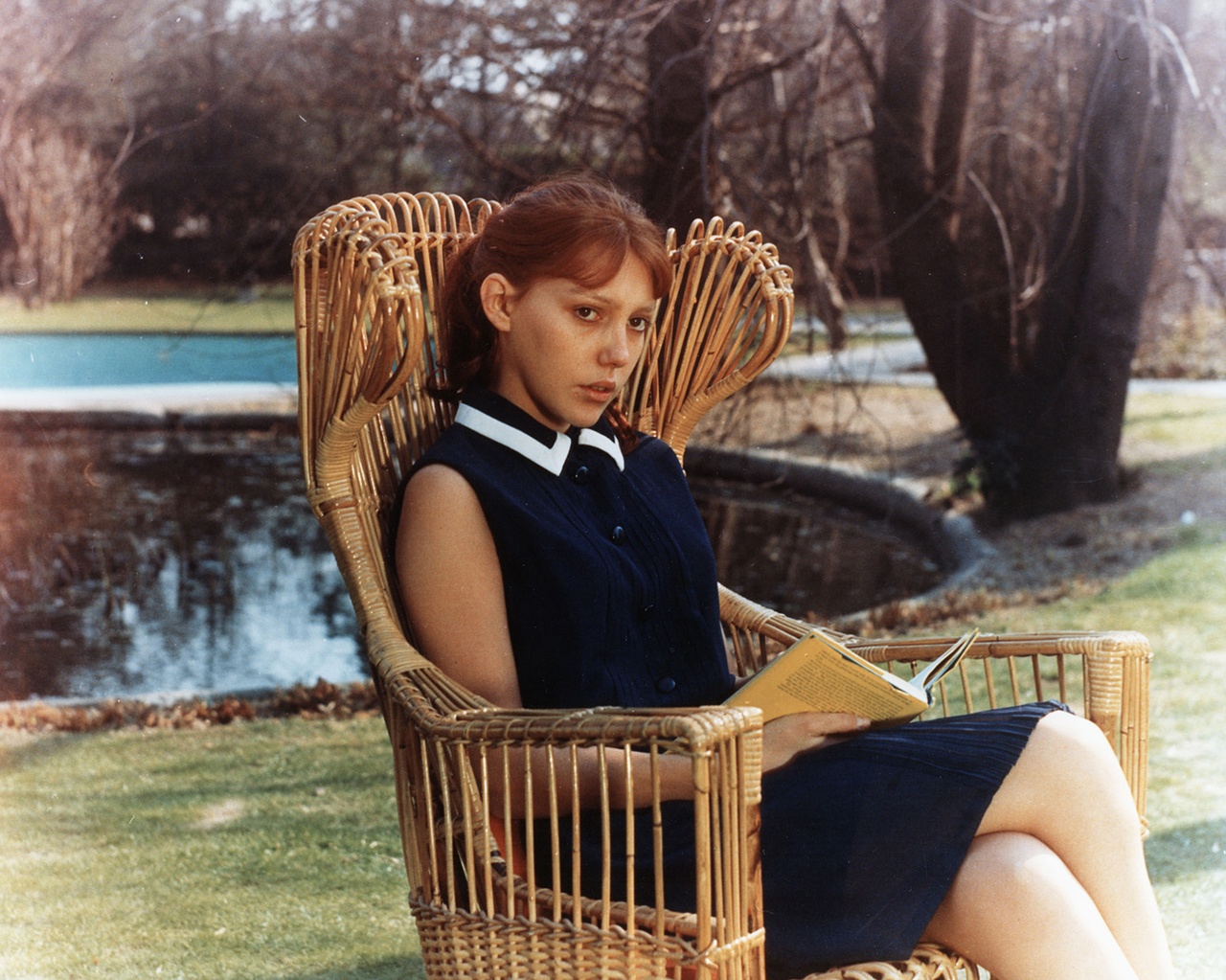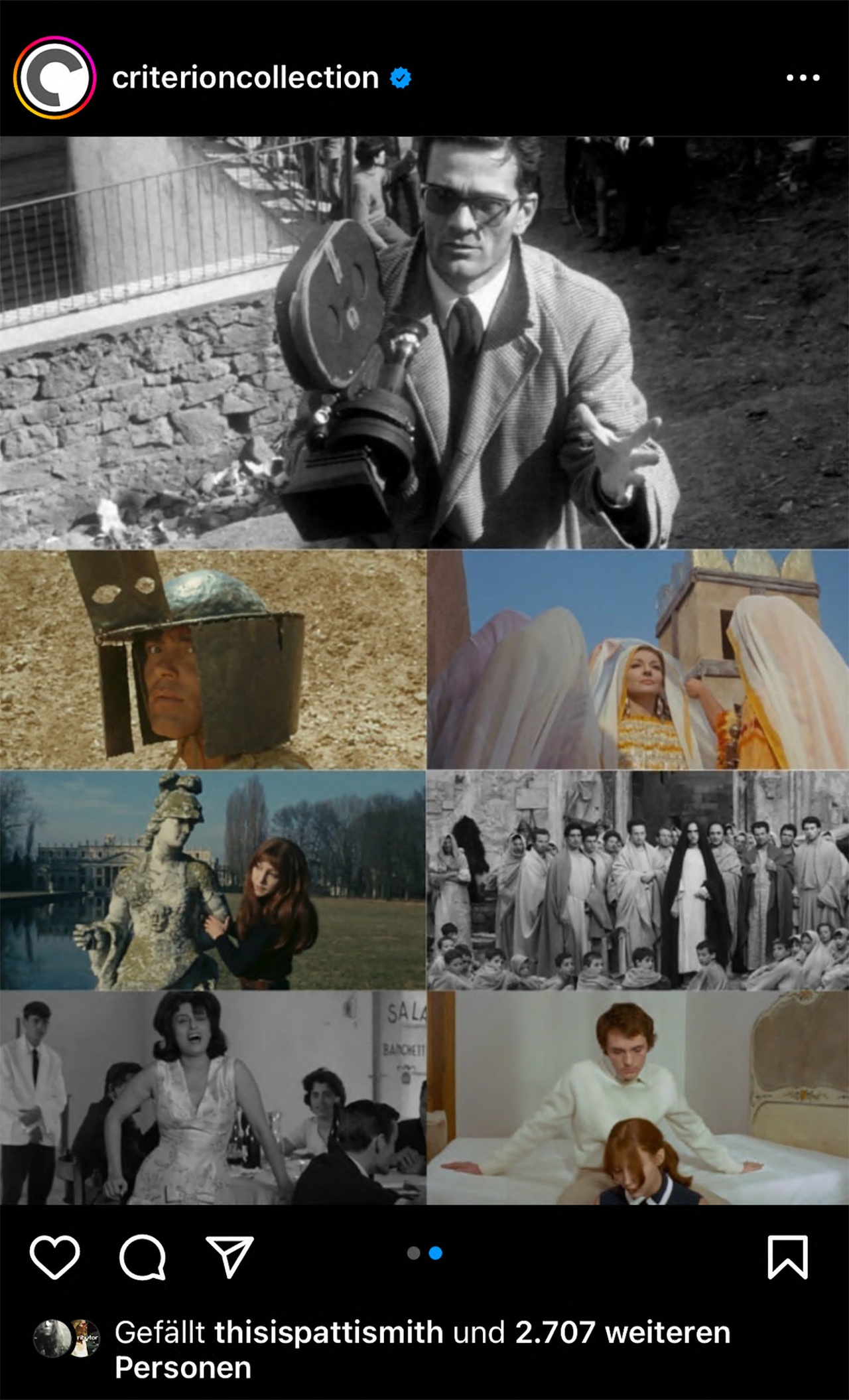CHEESE ANALOG Stephanie LaCava on New Translations of Pier Paolo Pasolini’s Books “Ragazzi di vita” and “Teorema”

Pier Paolo Pasolini, “Teorema,” 1968, film still
It is high summer and personal lives on blast tell an old story in new media: jet-fueled pictures of US-American women by the Mediterranean. They are wearing performatively modest one-piece bathing suits, shopping for dead-stock linens and Murano glass. Not far away, geographical space contracted to the digital, the bug-eyed daughter of the 45th president of the United States is soliciting on the Fourth, crowd-sourcing Italian holiday recommendations for her second week of July. Internet-speak. Both examples of proud citizens proffer themselves as good and devoted, seaside soon with a flea-market-found towel draped saintly over the head. Two sides of the same side eating ricotta and pasta. Back home in New York City, they both buy the cut-up cube cheeses at the specialty grocer.
These scenes share the palette of Italian polymath Pier Paolo Pasolini’s short film La Ricotta (1963). One of the women described above saw it when the Criterion Collection released a new box set containing nine of Pasolini’s movies earlier this year. It cost two hundred dollars and was on Blu-ray. La Ricotta was not included, but she found it on YouTube for free.
Pasolini is known by the English-speaking culture-industry consumer as a filmmaker. Elsewhere, he is seen as a public intellectual or “civic poet,” as his best friend, the Italian novelist Alberto Moravia, once said. [1] This kind of figure is hard to find today in a landscape where mimetic stupidity is commodified daily.
This October, NYRB (New York Review Books) will release a new translation by Tim Parks of Pasolini’s first novel. Its original title, Ragazzi di vita (1955) is often anglicized as The Ragazzi. Parks’s translation is called Boys Alive, and it will be published alongside the US debut of Pasolini’s third novel, Theorem (Teorema, 1968), translated by Stuart Hood. Both new books come after the aforementioned release of the Criterion box set, which is to say, at a moment marked by increased mass Anglophone awareness and interest in the work of the radical man-magician. This is late-stage assimilation for a moneyed elite ready to eat a prescient diagnosis of neoliberalism.

This review is unconventional in that it reflects how the two book releases function as example of the kind of “news peg” used by magazines and newspapers to induce “reviews,” which act as promotion for various projects. Often, they say very little in the form of critique for fear of negative consequences from both advertisers and subjects. The latter is important, as the profile or interview has superseded critical analysis for a sound-byte-hungry public. These new Pasolini releases present a catalyst for discussion of a devolving landscape led by consumer interest.
Pasolini saw this future writ large first through the Americanization of his beloved Rome. He breaks it down in 1958 for the magazine Vie Nuove: “The notion of well-being which the ideological influence of the ruling classes has depended on ever since the advent of television and pinball machines, and which is ushering in the Americanism […], is in reality another form of chaos, misery, instability.” [2] He foretells the horror and aftershock of the sublimation of innate drives – “anarchy and common sense” [3] – pushed toward indifference.
Teorema is a parable that tells the tale of a wealthy factory-owning family touched by the arrival of a mysterious figure. This beautiful man ends up sleeping with the father, mother, daughter, son, even the maid of the house. The film version would become better known, like its star stranger played by Terence Stamp. A year before its release, Stamp had a very public break up with Jean Shrimpton, perhaps this world’s first supermodel, who had left the photographer David Bailey for him – Bailey who inspired the film Blow Up. The larger machine had made Stamp into an icon. Pasolini gave him the role of a cipher for everyone’s projections. Stamp gave Pasolini his world audience.
Stamp’s precarious stranger rocks the film’s entire family. Even the father, a Milanese industrialist, unable to shake him, gives up his factory and hands it over to its workers. In one scene, Stamp undresses and climbs into an empty twin bed in the boyhood room of the son, Pietro, who sleeps nearby. In the novel version, Pasolini explains Pietro’s unease with his body. He is agitated and shameful and once in bed cannot sleep. The visitor embodies the opposite affect. “The young guest – full of that serenity of his which, however, does not harm anyone who lacks it – falls asleep, into the mysterious sleep of healthy persons.” [4] Post-encounter, the son turns to painting and ends up pissing on some of his discarded works.
Fast-forward to an unlikely reference: New Line Cinema’s major studio movie Wedding Crashers, directed by David Dobkin. Released in 2005, box office numbers came in at 288.5 million dollars. It tells the story of two divorce lawyers who end up at the high-profile wedding of the daughter of the US Secretary of the Treasury. One falls for the other daughter of the official, and the pair end up back at the family mansion, where the brother of the love interest – the son of the household – sits at the long silver-set dinner table leering into space. He wears a jacket with a school crest, hair gelled in multiple messy horns. Then we see him sweater-vest-clad at his easel, palette in hand, and later he visits one of the men in his guest room. Pietro, the teenage son in Teorema seems to be the direct reference for this character. Whether subconsciously or not, Dobnik’s movie apes the motif of a queer, paint-mad younger brother aroused by the arrival of a beautiful interloper.
The opposite of the sitting or dining room is the world of Boys Alive, where feelings are real and true and the aloof masters and factory owners can’t gain entry. Imagination and fun feed the Friulian-speaking young street hustlers even when their stomachs are empty. In Theorem the inverse is explained as entitlement by the omniscient narrator, “One of those men who are used to being always the possessors. All his life (by birth and class) he has always possessed: the idea has never occurred to him even for an instant not to possess.” [5]
For Pasolini, there was revolutionary, Mallarméan potential in publishing in Friulian, as he did in both Ragazzi di vita and his second novel, Una vita violenta (1960). To learn, he immersed himself in the slums surrounding Rome (and found his own sort of informants) to listen and transcribe local slang. He explains this in a story that appears in the appendix to the 1979 Einaudi edition of Ragazzi di vita:
Like me, the politician belongs to the bourgeois class, and distances himself from it, repudiating it momentarily, in order to understand and assimilate the needs of the proletarian, or at least the working classes. The difference is that in the politician this consciously political act antedates and prepares for action; in me, the writer, it is only a linguistic mimesis, a testimonial, a denunciation, the internal structuring of a narrative according to a Marxist ideology, an internal illumination. [6]
Parks’s translation of Boys Alive is curious in its use of Internet-speak. “Then he mouthed OMFG [7] with his big, poor bum’s, Porta Capuana lips,” [8] whereas in a 2006 edition Ann Goldstein translates this as “Then he went psst with his big lips, those of a beggar from Porta Capuana.” [9] Parks’s version is preferable if the criteria comes back to the author himself: “It exemplifies the art of saying and not saying, of winking to the listener, with the aim of poking fun at certain people (in this case, the conspirators, who are of noble spirit, and thus fools) and mesmerizing others (the large crowd).” [10]
Pier Paolo Pasolini, Boys Alive, trans. Tim Parks, New York: NYRB, 2023, 224 pages; Pier Paolo Pasolini, Theorem, trans. Stuart Hood, New York: NYRB, 2023, 208 pages.
Stephanie LaCava is a New York City–based writer. She is the author of two novels, The Superrationals (Semiotext(e), 2020) and I Fear My Pain Interests You (Verso, 2022).
Image credit: 1. © Alamy
Notes
| [1] | Moravia speaking at Pasolini’s funeral in 1975. |
| [2] | Pier Paolo Pasolini, “The City’s True Face” [1957], in Stories from the City of God: Sketches and Chronicles of Rome, trans. Marina Harss, ed. Walter Siti (New York: Other Press, 2019), 169–70. |
| [3] | Ibid., 169–70. |
| [4] | Pier Paolo Pasolini, Theorem, trans. Stuart Hood (New York: NYRB, 2023), 27. |
| [5] | Ibid., 72. |
| [6] | Pier Paolo Pasolini, “The Periphery of My Mind” [1958], in Stories from the City of God, trans. Marina Harss, ed. Walter Siti (New York: Other Press, 2019), 192. |
| [7] | As written in Parks’s manuscript, reproduced in the publicity ARC (advance reader copy). It is replaced by “Oh fucking shit” in the final printing. It is well documented that Sigmund Freud, having carried over a mistake from art historical texts on Leonardo DaVinci, mistranslated kite to vulture in a formative analysis. This works to meta-effect, highlighting the possibility for a six-month lead-time ARC to meddle with scholarship. |
| [8] | Pier Paolo Pasolini, Boys Alive, trans. Tim Parks (New York: NYRB, 2023), 25. |
| [9] | Pier Paolo Pasolini, The Street Kids, trans. Ann Goldstein (New York: Europa Editions, 2006), 31–32. |
| [10] | Pier Paolo Pasolini, “The End of a Post-War Era” [1950], Stories from the City of God, trans. Marina Harss (New York: Other Press, 2019), 157. |
